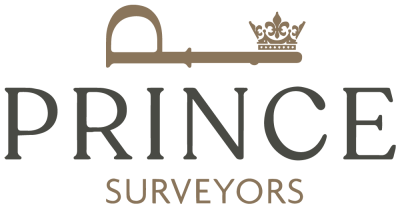Starting a home renovation can be overwhelming, especially if you haven’t conducted one before. Whatever the project, your remodel will likely involve a ton of details and legalities, and it can easily become daunting.
Renovating can also be an exciting event that makes your home feel like your own personal space.
Common work typically requires a permit in most areas: structural changes, additions, HVAC work, demolition, and re-roofing.
However, permit regulations and building codes vary depending on where you live, so you’ll want to verify the requirements and guidelines specific to your area.
Also, factor in the amount of time and finances required to file the above applications. Planning decisions can take weeks depending on your local municipality, the project’s scope, or your location (whether or not you’re in a historic district).
Let’s take a look at 5 things you need a permit for before you start your renovations.
Building Permits
Building regulations for outbuildings are required if the building’s floor area is more than 15 meters squared and the building has sleeping accommodation.
These same rules apply to sheds, greenhouses, and garages.
If you are extending or altering the roofline, you may require planning permission. If you live in a listed property or a designated area, you will require consent before carrying out any work.
Certain types of building work such as major office, shop, and residential developments must comply with Building Regulations. Applications must be made to the local Building Control department if necessary, and a scheme for self-certification is available to approved contractors.
The Building Regulations 2010 cover the construction and extension of buildings.
You might also need building regulations approval for many alteration projects, including if you plan to:
- Put in a fixed air-conditioning system
- Replace windows and doors
- Replace roof coverings on pitched and flat roofs
- Install or replace a heating system
- Add extra radiators to a heating system
Any work carried out that involves asbestos also requires a license from the Health & Safety Executive.
If you are building near your house’s boundary, you should check whether or not this work is affected by the Party Wall Act. It is also recommended to get your solicitor to check your title deeds or lease – there might be restrictions relating to the property’s development.
You can often get a building permit from your local municipality’s permit office. Costs and turnaround time will vary.
If you are uncertain about whether your project requires a permit, contact your local building permit office with a description of the project. The office will likely ask for project drawings to determine if a permit is needed.
It is often easy to confuse planning applications and building regulations. Building regulations set the standards for the construction and design of buildings. Whereas, planning permission seeks to outline how a town/city is allowed to develop. It is likely for most renovation works that both the local planning department and building control will need to be informed.
Electrical and Plumbing Permits
If you are wiring a new home or changing the wiring in an existing home, you will need to obtain permits before beginning the work.
The same goes for any plumbing installation in a new home or changing/repairing an existing home’s plumbing system.
Since 2005, all electrical work in dwellings in England and Wales, whether carried out professionally or as DIY, and whether or not the work is notifiable to a building control body, must meet the requirements of Part P of the Building Regulations.
“Part P states that anyone carrying out electrical installation work in a home must make sure that the work is designed and installed to protect people from fire and electric shocks.”
Compliance with Part P is intended to keep you and your family as safe as possible from electrical hazards.
From April 2013, electrical work in a dwelling, or associated with its surroundings, is notifiable to a local building control body where the work includes:
- The installation of a new circuit, whether at low voltage (typically 230 V) or extra-low voltage
- The replacement of a consumer unit (fusebox)
- Any alteration or addition to an existing circuit in a special location*, whether at low voltage (typically 230 V) or extra-low voltage
*A special location is a room containing a bath or shower, swimming pool, or sauna heater.
You might also need building permits if you intend to:
- Replace fuse boxes and connected electrics
- Install a bathroom that will involve plumbing
- Change electrics near a bath or shower
It is always advised that an Electrical Installation Condition Report (EICR) is obtained after any rewiring works have occurred. Ensure that the works are carried out by a certified (NICEIC) electrician.
A plumbing permit is required for the following:
- Replacing water heaters and underground piping, alter piping inside a wall or ceiling or beneath a floor, and for plumbing in all new installations
- Emergency repairs, alteration, freeze-damaged, or leaking concealed piping if new piping exceeds 5 feet
- Remodelling or adding on to your home when existing plumbing is to be relocated. This includes installation of building sewers, water service, and exterior rain drains
If you are applying for a building permit to resolve an emergency plumbing issue in a single detached dwelling or row townhouse (i.e., a water service repair or installation, sanitary sewer repair or installation, etc.), make sure that you include emergency plumbing repair in the description of proposed work field on the application form.
Generally, they will try to issue the permit the same day the application is received (provided all applicable fees have been paid and the law has been complied with). Ensure that any plumbing work is carried out by a certified (Gas Safe) plumber.
Gas Permits
Contractors marketing or installing a new boiler or new/used oil and gas fires must meet certain criteria. There are also regulations governing safety in the use and installation of gas appliances under the Gas Safety Scheme.
New heating systems that use propane or natural gas will need a permit and any alterations to such systems.
The Greenhouse Gas Emissions Trading Scheme Regulations 2012 came into effect in January 2013 and replaced the Greenhouse Gas Emissions Trading Scheme Regulations 2005.
The Green Homes Grant is a scheme designed to help homeowners make energy-efficient home improvements through government funding.
If you are eligible, the government will contribute two-thirds of the funding up to £5,000 or up to £10,000 for low-income homes. The homeowner or landlord must pay the other third.
The grant was introduced in September 2020 and will run until 31 March 2022, extending in November 2020. Your requested work will need to be completed before this date for you to benefit from the vouchers.
Building a Porch
Building a porch does not always require a permit. However, you will need a permit if:
- The ground floor area, when measured externally, exceeds three square metres.
- Any part is more than three metres above ground level.
- Any part of the porch is within two metres of any boundary of the dwelling house and the highway.
Also, if you take the property’s front door out, the porch then becomes part of the property and is subject to building regulations and potentially planning permission.
Typically, constructing a porch to a house falls under permitted development. Care should be taken to confirm this with the local planning authority.
Building a Fence
You will need planning permission for building fences if any of the following limits and conditions apply:
- If fencing is over 1 metre high next to any highway used by vehicles or the footpath or fencing is over 2 metres high elsewhere
- If your house is a listed building or in the curtilage of a listed building
- If the fence, wall or gate, or any other boundary involved, forms a boundary with a neighbouring listed building or its curtilage
You will not need permission to take down your fence unless it is in a conservation area.
Final Word
Because requirements can vary depending on the scope of the project, your location, the type of building, and more, it’s always recommended that you consult your local municipality before you start any major project.
If you start a project without the required permits, you could face excessive costs in the future, as well as potentially losing any work you might have completed.
If you have any questions regarding building permits, please contact us anytime and we will organise initial FREE expert advice for you.



